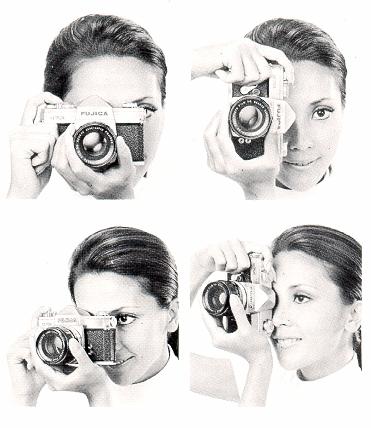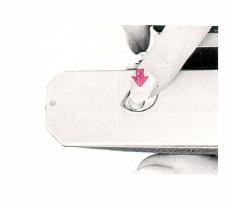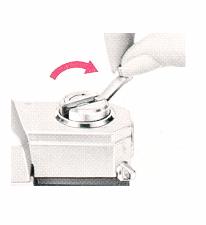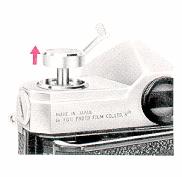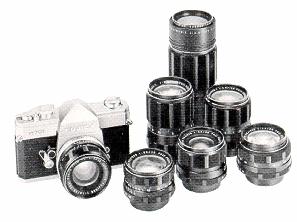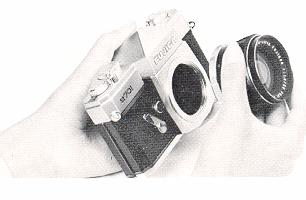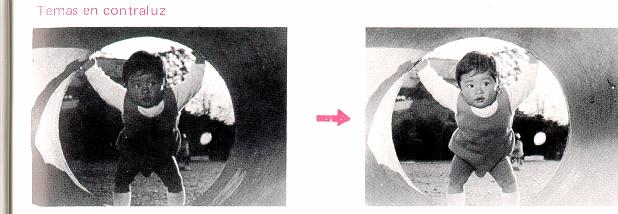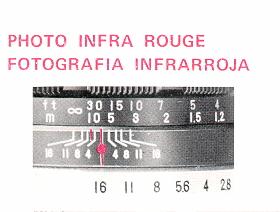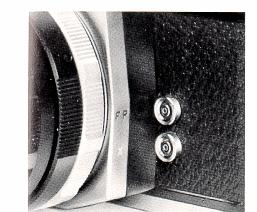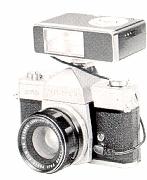Fujica ST701
On-line owners manual
This camera manual library is for reference
and historical purposes, all rights reserved.
This page is copyright© by  , M. Butkus, NJ.
, M. Butkus, NJ.
This page may not be sold or distributed without
the expressed permission of the producer.
On-line camera manual library
If you find this manual useful,
how about a donation of
$3 to:
M. Butkus, 29 Lake Ave.,
High Bridge, NJ 08829-1701
and send your e-mail
address
so I can thank you.
Most other places would charge
you $7.50 for
a electronic copy
or $18.00 for a hard to read Xerox copy.
This will help me to continue to host this site,
buy new manuals, and pay their shipping costs.
It'll make you feel better, won't it ?
"If you use Pay Pal, use the link below.
Use the above address for a check, M.O. or cash.
www.PayPal.me/butkus
Venmo @mike-butkus-camera Ph 2083
<<<
IF YOU WOULD LIKE THIS OR ANY PDF FILE
PRINTED, BOUND AND MAILED TO YOU,
SEE THIS OUTSIDE COMPANY'S OFFER >>>
Back to my main Camera Manual page
Click here for English
Fujica ST701 PDF
version of this manual
Fujica ST701 Gebrauchsanieitung
Fujica ST701
Mode d'emploi
Fujica ST701 Manual de instrucciones

These cameras need a Wein Air battery replacement
CONTENTS
Part 1, Fundamentals... 2 (These are the page number of the manual)
Names and Functions of Parts . .3
Special Features .......................9
Basic Steps.........................11
2. Battery Insertion ....................17
3. Film Loading ....................... 20
4. Setting the Film Speed ............... 24
5. Setting the Shutter Speed ............. 26
6 Focus the Lens and Frame Your Picture . .28
7. Correct Exposure .................... 31
8. Holding the Camera and Releasing the Shutter .... 33
9. Rewinding Film and Unloading Film .....36 |
Part 2, Advanced Techniques ....40
1. Changing the Lens ...................41
2. How the Exposure Meter Operates ... ..46
3. Exposure Correction ................. 52
4. Utilizing the Lens Depth of Field ....... 57
5. Using the Self Timer ................. 61
6. Infrared Photography ................ 63
7. Flash Synchronization Shooting ........ 64
8. Accessories for the FUJICA ST701 ...... 68
9. Care and Storage of your FUJICA ST701.. 78
10. Specifications ...................... 80
|
PARTS OF A FUJICA ST701
|
(1) Shutter Speed Mark (red dot)
(2) Shutter Speed Selector Dial
(3) Film ASA Speed Indicator Window
(4) Shutter Release Button / Provided with socket for cable release.
(5) Film Counter / Additive type, automatically resets
(6) Film Advance Lever
(7) Neck strap Eyelet
(8) Self-timer Start Button,
(9) Self-timer Set Lever / The shutter is activated in 8 ~ 10 seconds.
(10) Combination Exposure Meter Switch-Aperture Selector Button
(11) Film Plane Mark
|
(12) Combination Rewind Crank - Camera Back Lock
(13) Mercury Battery Chamber / Insert the mercury batteries for powering the camera Electric Eye System.
This needs a Wein Air battery replacement. (14) Lens Mounting Screw / Practice screw moment
(15) Aperture Selector Ring
(16) Depth of Field Indicator
(17) Aperture Distance Mark
(18) Distance Scale
(19) Focusing Ring
(20) FP Contact Socket
(21) X Contact Socket
|


|
(22) Taking Lens
(23) Viewfinder Eyepiece / Designed for attaching the Eye Cup and Accessory Shoe, etc.
(24) Accessory Shoe Guide Pin
(25) A Guide Rail,
(26) Film Rail / The film is passed over the Film Rail and the edges go between the Guide Rail.
(27) Film Rewind Spindle
|
(28) Film Chamber
(29) Film Rewind Button
(30) Tripod Socket
(31) Sprocket Wheel / The film perforations are engaged with the sprocket teeth to advance the film.
(32) Take-up Spool ) Camera Back Pressure Plate
|
SPECIAL FEATURES
1. Improved Through-The-Lens Exposure Meter
The exposure meter of the FUJICA ST701 consists of 2 Silicon photocell light receptors located on either side of the viewfinder eyepiece, which are connected to an PET (Field Effect Transistor) circuit and are coupled with the shutter and diaphragm. It measures the average light intensity which falls on the entire surface of the focusing glass. In other words, it measures the light that has passed through the lens and will actually reach the film.
Its special features are: high sensitivity, complete accuracy, instantaneous response, and a spectral sensitivity close to that of color film. Other merits are its compatibility with any lens that can be mounted on the camera, and elimination of the necessity of making exposure corrections in taking close-ups and in shooting with a filter on the lens because the light that has passed through the selected aperture is the light that is measured.
2. World Renowned FUJINON Lens
The interchangeable lenses of the FUJICA ST701 are widely known for their superb color definition and perfect corner-to-corner picture sharpness and clarity.
3. A Complete Camera System in Itself
A wide range of interchangeable lenses, accessories, and its improved through-the-lens exposure meter make the FUJICA ST701 a complete camera system itself capable of handling any picture-taking situation and subject.
BASIC STEPS
 |
1. Load the Film: Pull the Combination Film Rewind Crank - Back Cover Lock fully until the Camera Back automatically snaps open. Next, load the film cartridge into the Film Chamber and insert the film into the slot of the Take-up Spool. |
 |
3. Set the Frame Counter to 1 (the first black dot before the number 2) The odd numbers of the frame counter are represented by black dots. Wind the Film Advance Lever and press the Shutter Release Button. Do this twice, and on the 3rd winding, the first black dot will move opposite the white dot (starting mark). |
 |
4. Set the Shutter Speed:
Selector Dial Turn the Shutter Speed Selector Dial to the speed desired. If you are shooting out of doors, the shutter speed will be either 1/125 sec. or 1/250 sec. If you are shooting indoors, it will be 1/30 sec. or 1/60 sec. |
 |
5. Focus the Lens and Frame:
Your Picture Look through the Viewfinder Eyepiece and turn the Focusing Ring until the image in the microprism center spot appears sharp and clear. Now, frame your picture. |
|
|
6. Set the Exposure:
Press the Combination Exposure Meter Switch - Aperture Selector Button with the finger to activate the exposure meter needle in the viewfinder, and turn the Aperture Selector Ring until the needle moves into the center of the indentation. You can also set the aperture first then adjust the needle by turning the Shutter Speed Selector Dial. The aperture will return to wide open again as you release the switch. |
 |
7. Press the Shutter Release Button
Hold camera steady to prevent shake and gently press the Shutter Release Button. |
|
|
8. Rewind the Film
After you have exposed the entire roll of film, press the Film Rewind Button, erect the Film Rewind Crank, and turn it in the direction pointed by the arrow and wind the film back into the cartridge, until you feel tension released. Next, lift the Back Cover Lock fully up until the camera back snaps open. Now, remove the cartridge |
BATTERY INSERTION
 |
1. Open the Cover
Insert a coin into the slot of the
Mercury Battery Chamber Cover located on the upper left side of the body and turn it counter-clockwise.
2. Load the Batteries
Insert two mercury batteries, one on top of the other, into the battery chamber with the plus sides (+) facing down and close the cover. |
|
|
3. Check the Batteries:
Turn the Shutter Speed Selector Dial (2) to B and set the Aperture Selector Ring (15) to wide open (1.8). Now, point the camera toward light, look through the viewfinder and press the Exposure Meter Switch (30) . If the needle swings upward, the batteries have been inserted properly and are functioning correctly.
The mercury batteries will normally last for 1 year. (webmaster: see the following site on information about the no longer available mercury batteries)
My site: battery replacement information.
|
If you are not using the camera for a long while, remove the batteries and keep them where it is dry. Be sure to wipe both ends of the batteries clean with a piece of cloth before loading. Poor contact may result if the ends are unclean.
* If you are buying new batteries, be sure to specify 1.3V Mallory RM-400R or Eveready E-400 (see note above)
FILM LOADING
|
|
1. Open the Camera Back
Lift the Combination Film Rewind Crank - Camera Back Lock (12) fully up until the Camera Back (33), automatically snaps open. |
|
|
2. Load the Film
Insert the cartridge into the Film Chamber (28) with the spool head (projection) pointing to the bottom of the camera, push down the Combination Film Rewind Crank - Camera Back Lock (12) to engage the Film Rewind Spindle (27) with the film spool. Pull out the trimmed end of the film and insert it down to the bottom end into the slot of the Take-up Spool (32). |
3. Close the Camera Back
Wind the film a little with the Film Advance Lever (6) and engage the perforations on both edges of the film with the sprocket teeth. Be sure the film is properly inserted between the Guide Rail (25) . Now, press down the Camera Back until it closes tightly with a click
* If the Film Rewind Crank turns in the opposite direction of the arrow as you wind the Film Advance Lever, (6), it means the film has been loaded properly.
* The odd numbers of the Film Counter (5) are represented by black dots.
* To allow you to take quick shots in succession, the Film Advance Lever (6) will be back with a slight latitude. Press it all the way back after you have finished shooting.
|
|
4. Set the Frame Counter (5) to 1 (the first black dot before the number 2) Wind the Film Advance Lever (6) all the way to the right and press the Shutter Release Button (4). Do this twice, and on the third winding the first black dot before the number 2 will move opposite the white dot |
SETTING THE FILM SPEED
|
|
Lift the top of the Shutter Speed Selector Dial (2) and turn it to the left or right until the film speed number in the window shows opposite the black dot on the Film ASA Speed Indicator Window (3). If the Shutter Speed Dial is set at 1000, the dial will not turn counter-clockwise. If it is set at B. it will not turn clockwise. Be sure to turn it in the appropriate directions. |
The calibrations between the ASA numbers represent the following numbers: (1)
* If you are using a film marked for DIN speed, refer to the following conversion table. (11)
* Be sure to set the film ASA speed before setting the shutter speed, otherwise the selected shutter speed will move out of position while you are turning the dial.
SETTING THE SHUTTER SPEED
|
|
The letter B and the numbers 1, 2 - 1000 on the Shutter Speed Selector Dial represent "bulb", 1 sec., l/2 sec. etc. up to 1/1000 sec. They indicate the length of time the film will be exposed to light. This camera allows you to set exposure either by the shutter speed or by the size of the lens opening. However, it is best to set the shutter speed first. For example, the shutter speed would be from l/125 to l/250 sec. if you are shooting outdoors, or from l/30 sec. to l /60 sec., if you are shooting indoors. |
To set the shutter speed, first turn the Shutter Speed Selector Dial while pressing down on it slightly and set the number you want opposite the red dot on the camera body.
* Use B (bulb) if the exposure will take 2 seconds or longer.
* There are no intermediate settings between the numbers indicated on the dial.
* 60 is marked in red to remind you that it is the speed used for shooting with electronic flash.
* Each shutter speed is either one-half or twice the speed of the shutter speed next to it.
FOCUS THE LENS AND FRAME YOUR PICTURE
|
|
1. Focus the Lens
Look through the Viewfinder and point the camera so that the main subject of your picture falls in the microprism center spot of the viewfinder. Turn the Focusing Ring ~ to the right or left until the image in the center spot appears sharp and clear. (The grainy spots in the microprism center will disappear and the image will appear sharp and crisp when the lens is correctly focused.)
|
|
|
2. Frame Your Picture
The Viewfinder will let you see 90% of the entire view that will register on your film so that you can go ahead and use the whole length and width of the area in the Viewfinder to frame your picture.
* Eyesight Adjustment Lens The Viewfinder is provided with an eyepiece for those with normal vision. If you are near sighted or far sighted, be sure to use an Eyesight Adjustment Lens, otherwise it will be extremely difficult for you to focus the lens precisely. Four different Eyesight Adjustment Lenses are supplied as optional accessories: +2, +0.5,-2.5 and -4 dioptor,
|
CORRECT EXPOSURE
|
|
1. Press the Exposure Meter Switch
Point the camera at your subject while looking through the viewfinder and press the Exposure Meter Switch (10) . The meter needle on the right hand side of the viewfinder will move up from the ( - ) position. At the same time, the view will darken because the aperture will close down to the one you have selected. |
2. Turn the Aperture Selector Ring
Press down the Exposure Meter Switch and turn the Aperture Selector Ring (15) until the needle in the viewfinder moves into the center of the indentation. You now have the correct exposure. For precise adjustments, use the click stops provided between the renumbers on the Aperture Selector Ring.
3. If the Needle Does Not Move into the Center of the Indentation
.
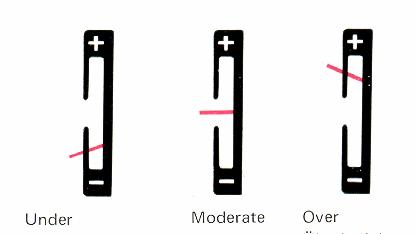 |
If the meter needle does not move into the
center of the Indentation by turning the Aperture Selector Ring, you
will have to change the shutter speed.
* If the needle is near the
(+) side, increase the shutter speed. (Example: If the shutter speed
is 1/125 see, turn the dial to 1/250 sec.).
* If the needle is
near the ( - ) side, reduce the shutter speed. (Example: If the
shutter speed is 1/125 sec., reduce it to 1/60 sec.). |
HOLDING THE CAMERA AND RELEASING THE SHUTTER
|
|
1. Hold the Camera Steady If you don't hold the camera steady, your pictures will not turn out sharp because the camera will shake. Be sure to hold yourself in good balance with elbows close against your body and the camera pressed lightly against your face. This is all the more necessary if you are shooting with the camera held vertically. Practice a little and get used to these motions.
|
2. Press Down the Shutter Release Button
Be sure to press down the Shutter Release Button (4) gently. Any jerky motion can cause the camera to shake and pictures to be unsharp.
3. When To Use a Tripod
If you are taking a close-up, telephoto shot, or if you are shooting at a shutter speed slower than 1/30 sec., be sure to use a tripod and cable release to avoid camera shake. A cable release is also recommended for shooting long-exposure shots with the camera placed on a table, against a tree, or on some other steady foundation. A cable release with a stopper attachment is a very convenient item for shooting with the camera set at B (bulb). You can press open the shutter, hold it in that position with the stopper for as long as you want, then release the stopper to close the shutter.
REWINDING FILM AND UNLOADING FILM
|
|
After you have finished a roll of film, rewind it back into the cartridge and take it out of the camera.
1. Press the Film Rewind Button First, press down the Film Rewind Button (29) located on the underside of the camera. Once you have pressed down this button, you can let it go because it will stay depressed. The Sprocket Wheels (31) are now free.
|
|
|
2. Turn the Film Rewind Crank Erect the Film Rewind Crank (12) and wind it in the direction of the arrow to return the exposed film back into the cartridge. Just before the end of the film is reached, you will feel a slight tension release on the crank. Give it 2 more turns and the film is wound back into the cartridge. |
|
|
3. Open the Camera Back Lift the Combination Film Rewind Crank - Camera Back Lock (12) until the Camera Back (33) opens with a snap. Now, take out the cartridge and send it to the processor - the sooner the better. Be sure to load and unload the cartridge in the shade away from direct sunlight.
|
If the end of the film is reached when you have wound the Film Advance Lever half-way around, do not force it because the film might break. Simply press the Film Rewind Button and wind the Film Advance Lever all the way back. The shutter will be wound, but the film will remain stationary. Since you have already pressed the Film Rewind Button, all you need do is turn the film rewind crank.
ADVANCED TECHNIQUES Read this only after you have mastered Part 1. After you have read this manual you will not only have gained a knowledge of the mechanical operations of this camera but also the immense possibilities of the FUJICA ST701 camera systems. as a whole. In other words you will be ready for adventures into the new and un-trodden regions of photography.
CHANGING THE LENS
|
|
A complete range of highly color-compatible, high resolution FUJINON interchangeable lenses are available for shooting sconces, portraits, snap-shots, news photos, and photo records with the FUJICA ST701. You can also use any lens with a Practica thread mount on it as well as any Leica mount lens by simply attaching a Leica mount adapter on the camera. But the Leica mount lens can only be used for shooting close-ups. |
How to Change the Lens
|
|
Hold the part of the lens barrel with the depth of field scale on it with your hand and turn it counter-clockwise. About 2 3/4 turns will dismount the lens. To mount, repeat the same motion in reverse, but be sure to screw the lens in tightly.
* When changing the lens, be careful not to touch the lens glass or the mirror in the body with your fingers.
|


HOW THE EXPOSURE METER OPERATES
Light Path Through the FUJICA ST701
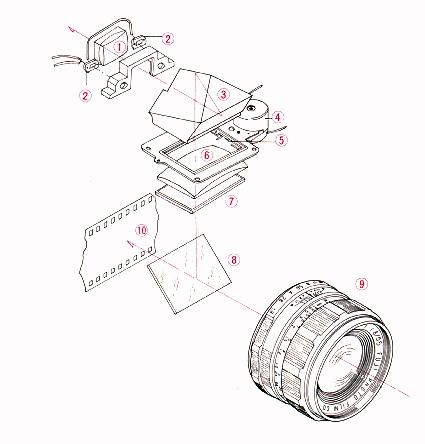 |
|
(1) Viewfinder Eyepiece
(2) Silicon Photocell Light Receptor
(3) Pentaprism
(4) Meter
(5) Exposure Indicator Frame
(6) Condenser Lens
(7) Ground Glass
(8) Quick-return Mirror
(9) Taking Lens
(10) Film
|
1. Measuring the Light that Will Actually Reach the Film
The exposure meter of the FUJICA ST701 measures the light that has passed through the lens and will actually reach the film as illustrated on page 46. Exposure is always exact because the meter is coupled directly with the shutter speed and diaphragm.
2. The Silicon Photocell Light Receptors are Coupled with an FET (Field Effect Transistor) Circuitry.
The Silicon photocell light receptors of this camera are located on both sides of the viewfinder eyepiece in order to measure the average brightness of the light that falls on the entire surface of the focusing glass. The Silicon photocell units are coupled with an FET circuitry to assure high sensitivity, instantaneous response and precise measurement of all types of light in order to yield consistently perfect pictures.
3. The Light that Passes Through the Selected Aperture is the Light that is Measured.
The exposure meter of the FUJICA ST701 measures the light that has passed through the selected aperture. Theoretically, the light quantity at f/8 1/250 sec. is the same as when the settings are f/5.6 1/500 sec., but precisely speaking the quantity would differ somewhat depending on the characteristics of the lens. By measuring the light that has actually passed through the aperture, which has been selected for making the exposure, all such differences are cancelled out. In addition, this system of light measurement is compatible with any lens as long as the mounting is the same. It also enables you to check the depth of field for the aperture you have selected. As the Meter Button is released, the diaphragm returns to fully open again, to enable you to check the focus once more if desired.
4. Shooting Close-ups is Easy
No exposure correction is necessary for shooting close-ups, or with a filter on your lens. All the complicated exposure computations required by other types of cameras has been entirely eliminated because the meter measures only the light that has passed through the lens and will actually reach the film.
5. Wide Measuring Range
Since the light that is measured is the average light intensity falling on the focusing glass, the range of measurement must differ depending on the speeds of the lens and film. A noteworthy feature of this exposure meter is that it covers a wide range of exposure values. If you are shooting with Fujicolor N100 (ASA 100) film using a 50mm F1.4 lens, for example, the range covered would be EV1 ~ EV18 (f/1.4 1 sec. ~ f/16 1/1000 sec.). If the lens is 55mm F1.8, the range is from EV1.7 ~ EV18 (f/1.8 1 sec. f/16 1/1000 sec.). The chart shows the light measuring range of the FUJICA ST701's exposure meter. A built-in safety device holds the operation of the shutter speed Selector Dial within the range given in the chart.
Chart of Exposure Meter ability.
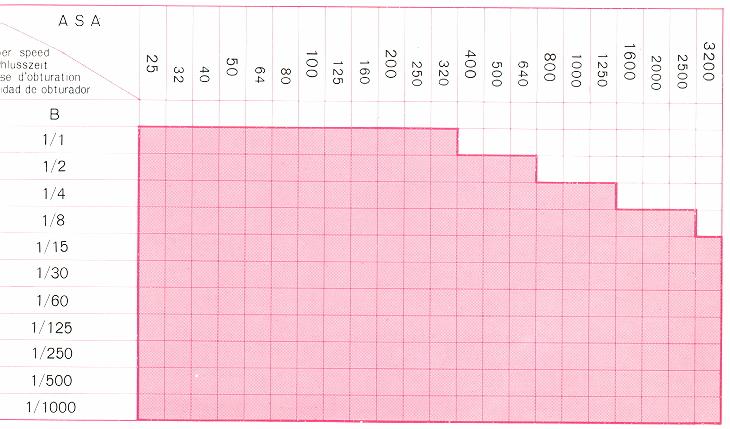
EXPOSURE CORRECTION
Any normal subject can be accurately exposed by following the meter reading. However, best results are obtained under the following situations by correcting the exposure.
1. Back lighted Subjects, etc.
Back lighted subjects or ski scenes, which are dominated by white areas and strong reflections, will turn out with the main subject underexposed. By opening the aperture by 1/2 or 1 full stop, or by approaching the main subject to measure the light intensity, ill can be correctly exposed.
2. Spot-lighted Subjects, etc.
A person standing before a black background or c spot-lighted subject in a stage play will be influenced by the dark surroundings and turn out overexposed The aperture should be stopped down by 1/2 or l full stop below that indicated by the meter.
3. Copying Documents The major portion of most documents are occupied by white areas. The situation calls for opening the aperture by l full stop from that indicated by the meter. If you want to be more precise, place an 18% standard reflectance card in front of the camera and set the exposure with the exposure meter. For maximum corner-to-corner sharpness, the minimum practical aperture should be used for copying work and for taking close-ups.
4. Taking Advantage of the Eye Cup With the aperture stopped well down, the light reflected from your eye or spectacles (if you are wearing them) will reach the focusing glass and slightly influence the meter reading. To avoid this, use an Eye Cup over the Viewfinder eyepiece.
UTILIZING THE LENS DEPTH OF FIELD
1. What is meant by Depth of Field To check the effects of the aperture you have selected - how well you have blurred out the background or how wide the depth of sharpness is all you have to do is to look through the viewfinder, because the aperture will close down to the size you have selected as you press down the Exposure Meter Switch. Thus, the sharpness of a picture extends over a considerable range both in front of and behind the point the lens is focused on. This zone of sharpness is referred to as the depth of field. The width of the depth of field differs depending on the lens focal length, subject distance, and lens aperture.

(1) The higher the aperture number (the smaller the aperture), the wider the depth of field. The lower the aperture number, the narrower it becomes. (2) The longer the focal length of the lens, the narrower the depth of field, and the shorter it is the wider it becomes. (3) The farther the distance the lens is focused on, the wider the depth of field. (4) The zone of sharpness in front of the point of sharpest focus is narrower than the zone of sharpness behind the same point. (5) Example A shows the aperture fully open. Example B shows the aperture stopped down to f/16.
2. How to see the Depth of Field All the interchangeable lenses of the FUJICA ST701 are provided with a depth of field indicator on the lens barrel. For example, if you are using an F1.8 55mm normal lens and have set the aperture at f/8 and the distance at 15 feet (5m), everything from about 11.5 feet (3.5m) to 28.5 feet (8.7m) will be in sharp focus.
USING THE SELF TIMER
|
|
If you are taking pictures of a group or if you are shooting a family souvenir picture and want to get into the picture yourself, just use the self-timer. First, mount the camera on a tripod, wind the film and push the Self-timer Set Lever all the way down, Next, press the Self-timer Start Button and move back into the picture. The shutter will be automatically released in 8 ~ 10 seconds. |
* You can set the self-timer first, then wind the film afterwards, whichever way you prefer.
* Don't press the Shutter Release Button "instead" of the Self timer Start Button, because you will release the shutter if you do.
INFRARED PHOTOGRAPHY - Go Digital instead !
When shooting with infrared film, remember that the point of focus will be slightly closer than the normal point. First, focus the lens on your subject as you would do normally, check the point on the Focusing Ring, and adjust that point to the infrared mark by turning the ring. The infrared mark is the short red line on the left side of the Depth of Field Indicator as you look down on the lens barrel.
FLASH SYNCHRONIZED SHOOTING
|
|
1. Flash Contact
Sockets and the Shutter Indoor and night pictures are shot with flash. It is also used as a fill-in light for outdoor pictures. You can use either flash bulb or electronic flash. Your FUJICA ST701 has two synchronization sockets for FP and X contacts. All you do is plug your flash unit or electronic flash into one or the other of the sockets depending on the type of light you are using.
|
The table below shows the shutter speeds that can be used with various types of lights. Be sure to plug your unit into the proper socket and set the shutter speeds that you may use.
2. How To Attach the Flash Unit.
|
|
If you are using a small flash unit, remove the Viewfinder Eyepiece and fit the Accessory Shoe into the Guide Pin on the left to hold it steady. If you are using a large unit, just use the bracket that comes with it to affix it to the camera. |
3. Flash Exposure
Be sure to follow the flash guide number to set the aperture if you are shooting with flash. This is the way to do it: If you are using FUJICOLOR N100 (ASA 100) film and an AG-6B flash bulb (FP rating) for shooting a subject 10 feet away and want to synchronize the flash with a shutter speed of 1/60 sec., just divide the flash guide number 80 (in this case) by 10 (the shooting distance). The answer is 8, which is the correct aperture. If you are shooting in daylight and are using the flash to fill in, just follow the correct exposure for daylight.
* Be sure to read the directions that come with your flash because the guide number will differ depending on the shutter speed.
* If you are shooting with electronic flash, be sure to set the shutter speed at 1/60 sec. or slower (see table).
ACCESSORIES FOR THE FUJICA ST701
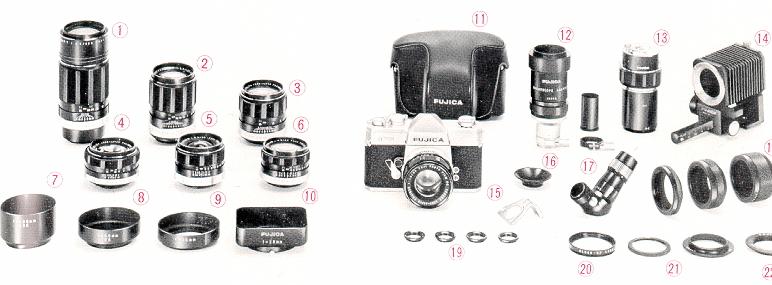
Interchangeable Lenses for the Fujica ST701 (1) Fujinon - T F4.5 200mm (2) Fujinon-t F3.5 135mm (3) Fujinon - T F2.8 100mm
(4) Fujinon F1.4 50mm (5) Fujinon - W F2.8 35mm (6) Fujinon - SW F3.5 28mm
Accessories
(7) Hood for 1OOmm and 135mm lenses (8) Hood for 50mm and 55mm lenses (9) Hood for 35mm lens (10) Hood for 28mm lens (11) Leather Case (12) Microscope Adapter (13) Macrocinecopy (14) Extension Bellows (15) Accessory Shoe (16) Eye Cup (17) Right Angle Finder (18) Extension Tube (19) Eyesight Adjustment Lens (20) Close up Lens (21) Reverse Adapter (22) Leica Mount Adapter
ACCESSORIES FOR CLOSE-UPS AND COPYING The single-lens reflex camera is the ideal equipment for taking close-up pictures and for copying work. You are assured of simplicity and accuracy with the accessories provided for these purposes.
Close-up Lens (20) If you are shooting a subject that is closer than the shortest shooting distance of the camera lens, just screw in the Close-up Lens in front of the taking lens. With a normal lens in place, it will let you shoot your subject from as close as 11 inches (28cm) up to 19.7 inches (50cm).
Extension Tube (18) This is used between the lens and camera body to extend the lens for copying work. Three pieces make a set. Used in combination, they will increase the magnification of a normal lens from approximately 0.34x to 1.2x. These tubes are equipped with automatic diaphragm to allow you to focus the lens with the aperture wide open.
Extension Bellows (14) This unit will let you freely adjust the distance between lens and film plane. It is a prime accessory for taking close-ups and high magnification shots of small objects at close distances.
Reverse Adapter (21) This accessory is used for mounting the reverse end of the lens to the Extension Bellows unit, to simplify focusing when taking pictures of subjects magnified to larger than life size.
Leica Mount Adapter (22) This is used for mounting Leica mount lenses on the camera. Only close-up shots are possible with this adapter in use. You can use it in combination with the extension bellows or extension tubes to mount a FUJINAR-E or FUJINON-E enlarging lens (These lenses are provided with Leica mount) to take close-ups for maximum sharpness.
Microscope Adapter (12) This is used in photomicrography for attaching the camera body to the microscope eyepiece.
Right Angle Finder (17) This is attached to the Viewfinder Eyepiece to simplify viewing through the finder when the camera is aimed from a low position or when it is mounted on a copying stand. The eyesight adjustment lens is built in.
Macrocinecopy (13) This accessory is used for making film reproductions of 8 and 1 6mm films and microscope slides with the FUJICA ST701. It can also be used as an extension tube for taking extreme close-ups,
EXPAND THE VERSATILITY OF YOUR FUJICA ST701 WITH PROPER ACCESSORIES
The FUJICA ST701 is provided with a broad range of accessories that will help you to expand the capabilities of your camera.
* Lens Hood (7) (8) (9) This is a vital accessory because it prevents unwanted extraneous light from entering the lens. It is particularly useful for shooting back lighted subjects. The Lens Hood is recommended for shooting under all conditions. If you are not shooting, you can turn it around and cover the lens with it. The lens cap is made to fit over the Lens Hood in this position.
* Eyesight Adjustment Lens Eyesight Adjustment Lenses are available to those who find it hard to focus the lens due to eyesight difficulties. Four different attachment lenses (+2, +0.5, - 2.5, and -4 dioptor) are available to the far-sighted or near-sighted.
* Accessory Shoe (15) This is attached to the Viewfinder for mounting a flash unit. Just remove the Viewfinder Eyepiece, fit it on and screw it in place with the eyepiece.
* Eye Cup (16) This is a protection against extraneous light for a clearer view through the Viewfinder. It also prevents light from entering the camera through the Viewfinder Eyepiece.
* Lens Cap Lens Front Cap - Protects the lens front glass. Lens Rear Cap - Protects the rear glass and automatic diaphragm of the dismounted lens Body Mount Cap - Protects the interior of the camera body from dust after the lens has been dismounted.
CARE AND STORAGE OF YOUR FUJICA ST701
After removing the exposed film from the camera, press the shutter release button to be certain the shutter is released. Dust off the camera periodically and wipe it clean with cleaning cloth (example: Silicon cloth). Use a blower brush to clean dust and film fragments that may have accumulated inside the camera. Guard the lens and viewfinder eyepiece against finger marks and dust. Use a blower brush to remove dust. Wipe off finger marks gently with lens cleaning fluid and lens cleaning paper. Do not touch the mirror with your fingers.
* If you are not using the camera for a long interval, remove the mercury batteries place the camera and batteries in separate cases, and store them away from moisture, heat, and dust. All the better if you can get hold of some desiccant or similar drying agent to put into the cases together with the camera and batteries.
SPECIFICATIONS:
Type: 35mm focal-plane shutter single-lens reflex camera with TTL exposure meter coupled with the shutter and diaphragm
Film Used: 135 cartridge-packed film,
Picture Size: 24 x 36mm.
Normal Lens: FUJINON 50mm F1.4 (6 component, 7 element), FUJINON 55mm F1.S (4 component 6 element)
Automatic diaphragm, multiple increment F-stop calibrations with click stops for intermediate
values, thread mount Rectilinear helicoidal focusing 1.83 Finch (49?mm) screw-in filter.
Distance Scale: F1.4 50mm 1 5 feet (0.45m) ~ infinity F1.8 55mm 1.5 feet (0.45rn) ~ infinity
Shutter: Focal plane shutter, B 1? 1/1000 sec. Film speed indicator window built into Shutter Speed Selector Dial built-in self timer.
Viewfinder: Pentaprism eye-level finder (0.96x magnification with F1.8 55mm lens), microprism focusing center
Mirror: Quick return type.
Exposure Meter: Through-the lens average light measurement with close-down-aperture, Silicon photo-cell receptors
coupled to FET (Field Effect Transistor) circuit, zero in type indicator needle visible in viewfinder.
Coupled Range: ASA 25 ~ 3200 (1/3rd step), EV1 ~ EV18 (f/1.4 1 sec. ~ f/16 1/1000 sec. with ASA 100 film).
Power Source: Two 1.3V mercury batteries (Mallory RM-400R, Ever-ready E400).
Film Transport: Single-stroke lever action, 193°winding angle, 20° latitude,
Frame Counter: Automatic resetting additive type.
Film Rewind: Hand crank.
Flash Synchronization: FP, X.
Lens Mount: Praktica thread mount, 1.65 ? inch (42mm), 0.093 P inch ( 1 P mm )
Dimensions: 5.24 x 3.59 x 3 47 inch (133 x 91 x 88mm) with F1.8 lens.
Weight: 27.3 oz (7809) with F1.8 lens 20.4 oz (5859) body alone.
Accessories Optional Accessories:
Leather Case, Eye Cup Eyesight Adjustment Lens, Right-angle Finder, Accessory Shoe, Close-up Lens, Extension Tubes, Microscope Adapter, Leica Mount Adapter, Reverse Adapter, Extension Bellows, Lens Hood, Body Mount Cap, Macrocinecopy.





















